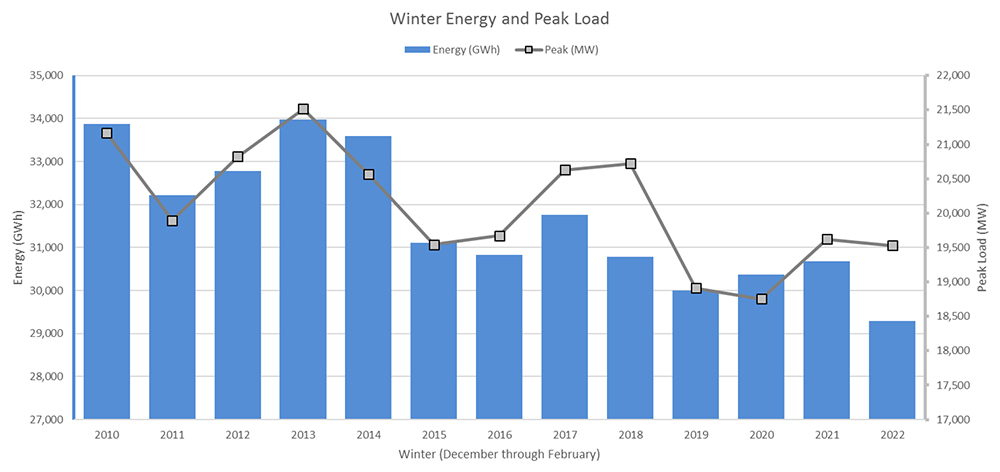Pacific Gas and Electric is seeking ways to save time and money on its $25 billion plan to underground 10,000 miles of power lines in high fire-threat districts, CEO Patti Poppe said during a first-quarter earnings call Thursday.
Digging trenches that are 30 inches deep, six inches less than the utility’s longtime standard of 36 inches, will save $25 million this year as PG&E tries to underground 350 miles of line, Poppe said.
“We determined that 36 inches of cover is not required in most places, and there’s little evidence that incrementally deeper conduits are meaningfully safer or more reliable than slightly shallower conduits,” she said.
“While this may not seem like much, a 6-inch change in depth reduces the labor hours required to install our underground conduits and reduces the amount of spoils [excavated earth and rock] created during our trenching activities by approximately 17%,” she said.
Poppe said PG&E is exploring whether “it’s appropriate to put the conduits 24 inches deep, another 6 inches of potential savings, and we’re analyzing the entire undergrounding delivery process through a value stream mapping exercise to identify further opportunities for efficiency, better customer and co-worker engagement, and even more waste elimination.”
The undergrounding effort is part of PG&E’s wildfire mitigation plan (WMP) that it filed with the California Office of Energy Infrastructure Safety (OEIS) in March.
The utility announced its undergrounding plan in July 2021. That year it buried 73 miles of line, and in 2022 it undergrounded 180 miles. From 350 miles in 2023, PG&E plans to ramp up to 450 miles in 2024, 550 miles in 2025 and 750 miles in 2026.
“We will continue to build on this progress during the WMP cycle by undergrounding 2,100 miles of distribution lines in [high fire-threat districts] from 2023 to 2026, effectively eliminating the ignition risk for overhead lines in those areas,” the wildfire plan says. “Between 2023 and 2026, 87% of PG&E’s undergrounding work is planned for the top 20% of risk-ranked circuit segments, as identified by our risk models.”
PG&E intends to file a 10-year undergrounding plan this year with OEIS under the terms of Senate Bill 884, a bill approved last year that provides for expedited review of undergrounding plans submitted by large electrical corporations to OEIS and the California Public Utilities Commission.
Once filed, OEIS will have nine months to review the plan before passing it on to the CPUC, which will also have nine months to review it.
Reduced Miles and Costs
During a February earnings call, Poppe said PG&E had buried line last year for less than the $3.75 million per mile it had originally estimated and expects to bring down the cost of undergrounding to $2.5 million per mile by 2026 through efficiencies of scale and technical advances.
The utility also reduced the scope of its work, saying it would bury 2,300 miles of line by 2026, not the 3,600 miles it originally targeted.
In its 2023 general rate case, PG&E had asked the CPUC to approve nearly $10 billion for three years of undergrounding but revised that figure down to about $6 billion because of the decreased mileage.
Even with the reduced mileage and costs, critics have called the plan expensive and unrealistic.
The Utility Reform Network, a consumer watchdog group, said in a Jan. 23 brief to the CPUC that PG&E had lowered its mileage target because it knew it would not meet its initial undergrounding goals.
“PG&E itself has come to realize that those targets were unrealistic,” TURN said.
Nevertheless, the utility is “moving ahead with plans to underground 350 miles in 2023, at a forecast cost of approximately $1 billion,” TURN said. “PG&E appears committed to this path, even though it has not received any authorization from the commission for any rate recovery for its 2023 undergrounding proposal. Needless to say, PG&E’s undergrounding request is hugely controversial and subject to CPUC disapproval, in full or in part.”
TURN recommended that PG&E should focus its system hardening work on installing covered conductor, “a proven strategy” that would be less than a third of the cost of undergrounding.
PG&E, however, said in its WMP that undergrounding is key to its “stand that catastrophic wildfires shall stop.”
The utility’s overhead lines have been blamed for a series of wildfires starting in 2015 and extending through last year’s Dixie Fire, which burned close to 1 million acres. The fires included the 2018 Camp Fire, which leveled the town of Paradise, killed 84 people and drove PG&E to file for bankruptcy reorganization in January 2019.
PG&E equipment did not cause any large fires in 2022, which the utility partly credited to its use of enhanced fault-detection technology that quickly de-energizes lines when changes in current are detected, limiting ignitions. (See PG&E’s Distribution System Needs Replacing, Monitor Says.)
One result has been a gradual rise in PG&E’s stock price over the past year. Its shares had traded at around $9 to $12/share for more than two years after its emergence from bankruptcy in June 2020 but closed Friday at $17.27/share.
On Thursday, the company reported first-quarter GAAP earnings of $569 million, or 27 cents/share, compared with $475 million, or 22 cents/share, in the first quarter of 2022.



